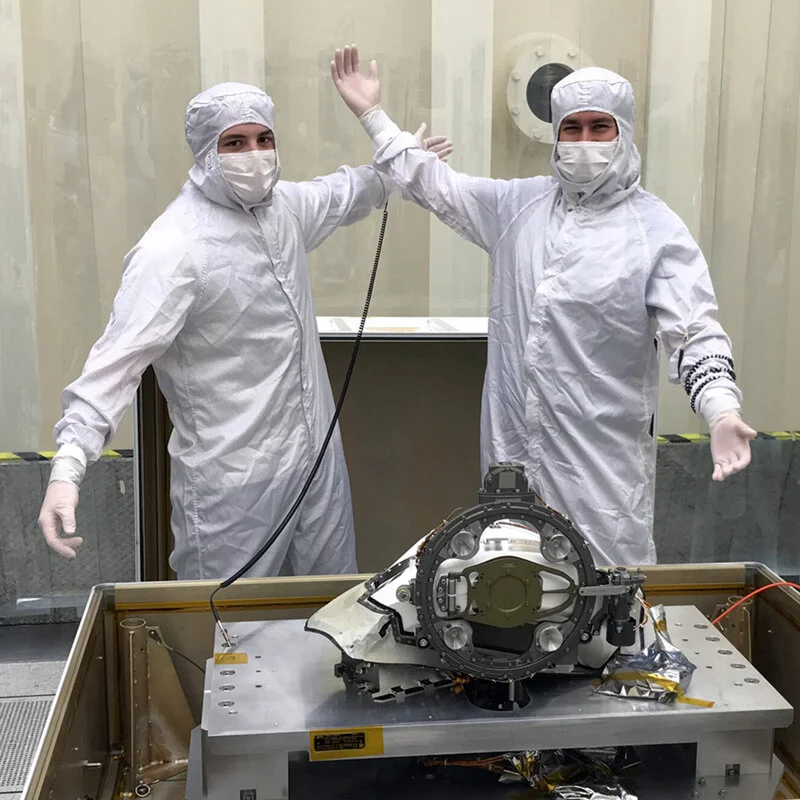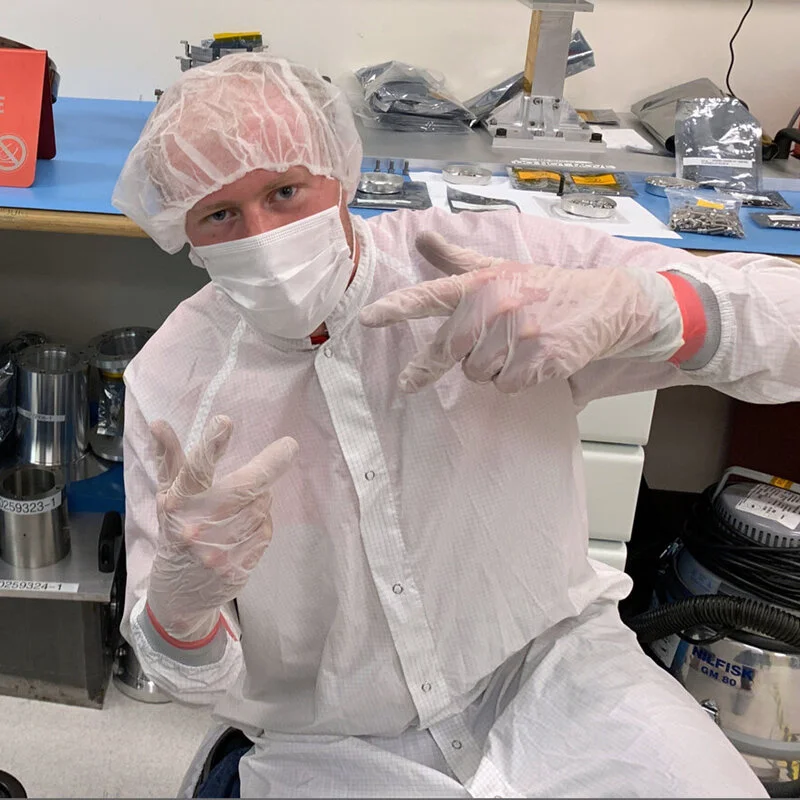Meet the Martians
Caltech scientists, engineers and others have their fingerprints all over the recent Mars 2020 mission. Here some of them discuss their work and react (in real time) to the successful landing.
Photo: NASA-JPL/ Caltech
Life on Mars? Perseverance Starts its Search
Perseverance, the largest, most advanced rover NASA has sent to another world, started its exploration of Mars on February 18, after a 203-day journey traversing 293 million miles. With the announcement of “Tango Delta. Touchdown confirmed,” the skeleton crew on site at JPL, which Caltech manages for NASA, broke out into applause as the rover landed on the planet’s boulder-strewn surface.
The 2,263-pound, car-sized rover is investigating the rocks and sediment of the ancient lakebed and river delta of Mars’ Jezero crater. A fundamental part of its mission is astrobiology, including the search for signs of ancient microbial life. To that end, the Mars Sample Return campaign will allow scientists on Earth to study samples collected by Perseverance to search for definitive signs of past life.
“The idea of bringing a sample back from Mars goes back decades,” says Ken Farley, Caltech’s W. M. Keck Foundation Professor of Geochemistry and the mission’s project scientist. “We are in a position now where if everything goes according to plan, samples will be coming back to Earth in 2031.”
Jezero crater sits on the western edge of Isidis Planitia, a giant impact basin just north of the Martian equator. Scientists have determined that 3.5 billion years ago the crater had its own river delta and was filled with water. “Life as we know it could have lived in that lake,” Farley says, “and the mud of a delta is really good at preserving the biosignatures of life.”
Equipped with seven primary science instruments, the most cameras ever sent to Mars, and a complex sample caching system (the first of its kind sent into space), Perseverance is now beginning to scour the Jezero region for fossilized remains of ancient microscopic Martian life, taking samples along the way.
A pair of zoomable science cameras on the rover’s remote sensing mast, Mastcam-Z, of which Caltech’s Bethany Ehlmann, professor of planetary science, is a co-principal investigator, will create high-resolution, color 3D panoramas of the Martian landscape. Also located on the mast, the SuperCam, which Professor of Geobiology Woody Fischer has helped develop, will use a pulsed laser to study the chemistry of rocks and sediment.
“There is this real opportunity for us to discover something amazing from Mars,” says Fischer, “but also to discover something on Mars that we take for granted on Earth. Maybe there are abiotic ways to generate some of the materials and textures that we assume to be produced by life on Earth.”
Video reactions to the landing…
Bethany Ehlmann, professor of planetary science
Caltech graduate students
JPL’s Mission Control
Woody Fischer, professor of geobiology
Helping make the mission a success…
Ari Rosner (on the left in the photo) is a Caltech senior pursuing a double major in mechanical engineering and business, economics, and management (BEM). Since 2018, he has held an APX (academic part time) position at JPL with the mechanical structures and configuration group, where he was part of the team that built the Perseverance rover for the Mars 2020 mission. Click the photo to learn more.





